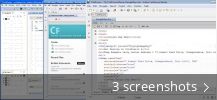

To get the full use out of ColdFusion Builder we need to configure it to communicate directly with our ColdFusion server. You can experiment with these if you like. Add the function listed below to utility.cfc between the two curly brackets:.

Check the box labeled Generate Script Style Code.Go to the File Menu -> New -> ColdFusion Component.We could also use a ColdFusion Component to show some things off. If Location is blank, click the Browse button.Go to the File Menu -> New -> ColdFusion Page.To start experimenting with ColdFusion Builder we will need a ColdFusion file, called a “template”. Make sure it is selected and click Choose.Create a new folder named SampleProject.Hit the Browse button and navigate to your ColdFusion webroot.

Uncheck the Use Default Location check box.Give your project a name: SampleProject.Go to the File Menu -> New -> ColdFusion Project.Create a folder in your ColdFusion's webroot named SampleProject.Opening up a new installed version of Coldfusion Builder should show you something similar to figure 1.
#Adobe coldfusion builder 3 how to
This Refcard will show how to do a 1 app to 1 project match. Some people make the root of their project the root of their Web server, and have all of the applications under one giant project. However, they are not required to a one to one match. Many developers setup one ColdFusion Builder project per ColdFusion application. The basic collection of code in ColdFusion Builder is a project.


 0 kommentar(er)
0 kommentar(er)
